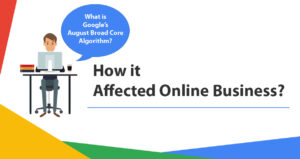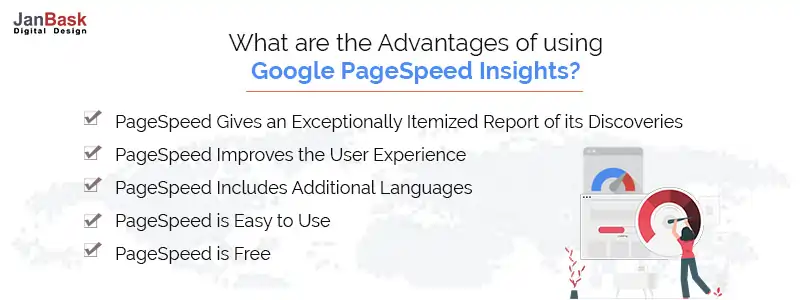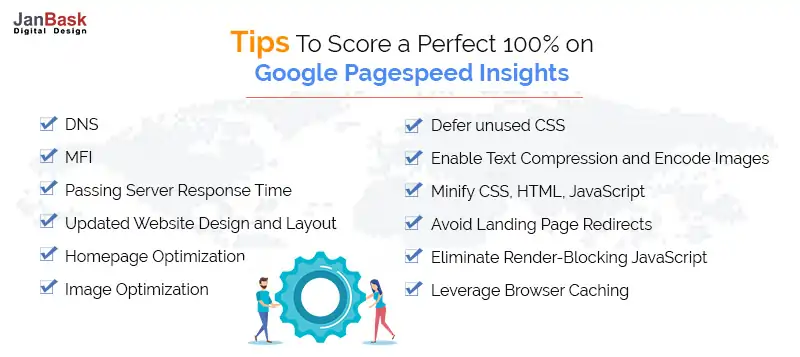
It is always a good feeling to be on top of anything and everything. Google Page Speed is something that impacts the performance of your website to a great extent. Google Page Speed is your website loading speed in general. You need to make sure to cut down the elements that weigh your website down. This way you can increase the Page Speed of your website and rank high. This adds to the overall SEO Ranking as well. Let us see in this article how to infer the essence of Google Page Speed Insights and formulate and implement the best-fit algorithms to top in the Google Page Speed Test!
How To Become At Top Of Google Page?

Subsequent to navigating 900,000 advertisements, analysts from Google Page Speed Insights found that the normal portable presentation page stacks in a humiliating 22 seconds. That is more than multiple times longer than most anxious web clients will hold up before they surrender a page — 53% to be correct. On the off chance that your page takes over 3 seconds to stack, the greater part your prospects are leaving before they even observe it. As though that weren’t sufficiently terrible, the page insights found that with every torturous moment a page doesn’t stack, many more guests will skip.
With the assistance of machine-learning in innovation from SOASTA, scientists found a connection between load time, page weight (measure in data), and transformation rate. Fundamentally, “heavier” implies slower. In particular, when the number of components (content, pictures, and so forth) on page increments from 400 to 6,000, your odds of changing over a guest drops by 95%.
On the off chance that your page stacks gradually, however, pinpointing the issue isn’t in every case simple. While the measure of Google Page Speed impacting content and number of pictures are discernible initially, issues like unnecessary JavaScript and too many sidetracks aren’t.
Google PageSpeed Insights is a tool that enables you to rapidly and effortlessly test the speed of a site page. Luckily, it is a free tool that you can use to discover precisely what’s moderating your page’s loading time. Entering a URL and hitting “Analyze” will rapidly get you a nitty-gritty report of what’s abating that site page dependent on two parameters, complete with suggestions on the best way to settle it.
So how do PageSpeed Insights assess your site? It takes a gander at the system autonomous parts of page execution: server arrangement, the HTML structure of a page, and its utilization of outside assets, for example, pictures, JavaScript and CSS.
Testing your site with PageSpeed Insights can be an eye-opener for any individual who hasn’t tried to enhance their site, and furthermore Page Insights offers an extraordinary beginning stage for those hoping to enhance site execution.
Having said that, it can likewise send you into a pointless frenzy when a site returns lower than anticipated scores in the Google Page Speed Test, or recommendations that counter estimates you have set up on your site. The instrument is presently based around two key measurements:
1.First Contentful Paint
2.First Input Delay
The above two parameters are scored in three different ways:
1.Fast
2.Average
3.Slow.
Here is what those two measurements mean in plain language.
FCP is an elaboration on “first paint”, a metric which estimates when any render shows up inside the program (even an adjustment in foundation shading, for instance, would check). The FCP metric estimates the time until the point that real substance has been stacked on the page, giving you a more valuable client encounter appraisal.
2.2.First Input Delay (FIP)
The FIP is an important parameter of the Google Page Speed Test and it implies the loading time of a site. It is basically the time duration from when a user communicates with your site to the time when your browser is actually starting to communicate with the browser.
When somebody arrives on your site, you just have a couple of moments to catch their eye and persuade them to stick around and not skip. Quality substance and an attractive subject are essential; however in the event that your page stacks gradually, you could lose individuals before they even motivate an opportunity to see your substance.
As per Kissmetrics, almost 50% of web clients anticipate that a website will stack in two seconds or less, and they will in general surrender destinations that don’t stack inside three seconds. A sum of 79 percent of online customers who experience difficulty with website execution won’t come back to the webpage to purchase again and around 44 percent of them would tell companions on the off chance that they had a poor ordeal shopping on the web which is a negative impact to your website. That is why PageSpeed is very important.
While pagespeed is one of in excess of 200 signs Google uses to decide the overall rankings and less than 1 percent of hunt questions are influenced by the site speed flag, it’s transformations that you have to stress over.
A good site with great pagespeed will give your guests trust in your item or benefit and persuade them to hand over their money. Page execution is a basic part of each site. You can have extremely extraordinary substance and a pleasant looking site, however, on the off chance that it takes too long to stack or isn’t versatile responsive, individuals will rapidly proceed onward to your rivals’ sites.
It is then you realize it is genuine on the grounds that we as a whole do that. Google PageSpeed Insights can break down how your site is running and give answers for incrementing your site’s execution, stack time, and the sky's the limit from there.
Here is a list of advantages of using Google PageSpeed Insights

Get a report that shows how your site is getting along and what changes (if fundamental) you need to apply. It gives both investigation and advancement administrations which are extremely useful to build the speed of your site.
Today, numerous individuals utilize their cell phones to visit sites and you can lose a great deal of traffic if your page isn’t mobile responsive. Google PageSpeed Insights makes a definite report of your current score and let you know whether your page regards mobile stages or not. You may utilize its execution tips to enhance both work area and mobile web execution
This tool can very easily be utilized in various languages, for example, Russian, Spanish, and Serbian.
Google PageSpeed Insights doesn’t expect you to have your site with or be a client of Google. You don’t have to round out any enrollment frames, make a record, or give an email address to utilize it.
Google PageSpeed Insights is absolutely free to use all across the world. You do not have to pay a single penny for using this amazing tool.
Here are some tips that you can deploy to score a perfect 100% on Google PageSpeed Insights.

We utilize Cloudflare, however, none of it speeds streamlining. We found in our tests that it was slower. In the event that you’re in a mutual facilitating condition, Cloudflare will most likely help a great deal. In any case, for us specifically, with a devoted server, it was better with everything turned off. In the event that you have no aptitudes or time to introduce Cloudflare as an option, you can utilize facilitating suppliers, for example, WP-Engine, Presslabs, Pantheon.io. They worked together in the server store and CDN arrangement.
Mobile-First Index - This is one of the most important criteria for SEO Ranking at present. When a website is built, it has to be optimized to be viewable on smartphones and other electronic gadgets. This is due to the fact that browsing, today, happens majorly on mobile phones. Thereby, it is essential that your website is optimized accordingly since it contributes to Google Page Speed significantly.
The benchmark is 0.2 seconds. Anything over that and Google marks you down. Our site keeps running on a high spec committed server with a bunch of records. A large portion of what you read online will recommend you change to a quicker WordPress account (with partner joins) which is the most straightforward way, yet I wasn’t prepared to abandon our own condition without at any rate attempting.
Having a great deal of server administrator encounter I turned off any pointless administrations running on the server to enable increment to Pagespeed. Notwithstanding, that didn’t have a great effect.
The greatest distinction we saw to lessen server reaction time was to change to PHP 7. Not all hosts bolster PHP 7, but rather, fortunately, since we have our very own locales, we do. Blended reports online demonstrate a 20 to 50 percent speed increment in changing to PHP 7.
Notwithstanding the real rate, we had the requirement for Pagespeed and needed to test it out. In the event that you don’t recognize what variant of PHP you are running, introduce this module and you will see it in your “At a Glance” on your Admin Dashboard.
Before you go further, you have to check if the site is good. Fortunately, there is a PHP similarity checker module you can download for WordPress which looks over your code and recognizes any issues with changing to PHP 7. The outcomes of the Page Insights demonstrated a couple of things that required tending to, which we rapidly dealt with.
We were, at last, prepared to change to PHP 7. So as to change, from WHM you get to the “Multi PHP Manager”, select the website that you need and change the PHP Version. On the off chance that you don’t approach WHM, ask your server administrators, yet ensure you are doing it on a test/advancement condition – it’s not best practice to break your production site.
Grid Layout is the talk of the town in terms of website design and layout. In terms of Google Page Speed Insight, grid design has more advantages. Also, I found that my offered a greater number of highlights than I needed on my site so I went looking for a basic, moderate topic. I discovered Frank, a topic planned particularly for speed. The parent’s subject’s default landing page makes nine database inquiries and comprises only two HTTP asks for, weighing about 29kb. This topic is overly lightweight – no JavaScript structures and no superfluous pictures, only a basic and responsive subject. In the wake of introducing Frank’s subject, the number of HTTP requests expected to load my site decreased from 31 to only four.
There are some simple approaches to additionally accelerate your site:
Generally, a spotless and centered site configuration will help your page look great, as well as PageSpeed will become faster.
High resolutions pictures take much longer to stack than upgraded pictures, and superfluously substantial grinds can definitely back off pagespeed. WPMU DEV offers a fabulous (free!) module called WP-Smush.it. When you bulk smush pictures with this module, you’ll locate the measure of your pictures will be colossally decreased without trading off visual quality. While we’re on the theme of pictures, apathetic stacking pictures can likewise enhance pagespeed.
JPEG 2000, JPEG XR, and WebP are picture formats that have better pressure and quality attributes as compared to their more established JPEG and PNG partners. Encoding your pictures in these arrangements as opposed to JPEG or PNG implies that they will load quicker and take up less mobile data which will enhance Google Page Speed performance . WebP is bolstered in Chrome and Opera and gives better lossy and lossless compression for pictures on the web.
Unused CSS backs off a program’s development of the render tree. The render tree resembles the DOM tree, then again, actually, it additionally incorporates the styles for every hub. To build the render tree, a program must walk the whole DOM tree, and check which CSS rules apply to every hub. The more unused CSS there is, the additional time that a program may conceivably need to spend figuring the styles for every node which will negatively impact Google Page Insight Speed.
You need to compress your text files too if you want to optimize your Google Page Speed. Text compression allows faster network transfers, hence facilitating better. Encoding images is the type of data compression, which allows you to compress the image storage and transmission.
“Minifying” alludes to expelling pointless or repetitive information without influencing how the page is handled by the program which will enhance the Google Page Speed results. Poor coding can be the reason for this issue, and it tends to be settled in a couple of various ways.
Outside of studying your page’s source code physically, Google suggests attempting the accompanying assets:
Another choice is, obviously, to exploit Google’s AMP and AMP for promotions systems. The two projects enable engineers to manufacture pages with a stripped-down form of HTML, CSS, and JavaScript. The outcome is pages and promotions that heap in a small amount of a second.
In the event that your page hasn’t been structured responsively, the outcome could be various sidetracks to pages advanced for various gadgets which will increase the PageSpeed. Some basic divert designs, as indicated by Google:
Each time a client must be diverted, page rendering stops — which adds valuable seconds to your page’s heap time. Stay away from sidetracks inside and out by building your pages with the responsive plan — a technique that guarantees quality client encounters regardless of the gadget your prospect is on. This way the final Google Page Speed Test results will be better.
In addition to other things, JavaScript empowers some amazing outsider devices and intuitive page components. The issue with it will be, it additionally stops the parsing of HTML code.
When you see an error message that peruses “eliminate render-blocking JavaScript,” it implies there’s a bit of JavaScript code that is delaying the stacking procedure for the above-crease bit of your page that negatively impacts the Google Page Speed Test results. Outsider contents specifically are probably going to fault for this issue. Handle it in three different ways:
By trying to implement the above steps, the overall Google Page Speed Test Results improve.
It can take different demands between a server and program before a page completely stacks for a client. To the extent time is concerned, everyone includes. Storing enables your program to, as it were; “recall” certain components that have been as of late stacked — header, route, logo, and so forth. The more components the program can store, the fewer components it needs to stack the minute the client makes a demand, and at last, the quicker a page will stack which increases the PageSpeed. Google prescribes a base reserving strategy of multi-week, and for components that go generally unaltered, one year is ideal.
The web has moved towards becoming packed and you can’t lay your laurels hoping to be famous and effective if your site is running moderate or isn’t playing out the manner in which it should. Google PageSpeed Insights’ proposals depend on flow industry best practices for work area and versatile web execution, so don’t hold up progressively and begin getting more groups of onlookers, expanding your website’s execution and web index positioning, and enhancing your guests perusing background. You now have a good knowledge of this entire buzz about Google PageSpeed Insights.
Use the tips mentioned above and you are likely to see some good results and positive changes. Also, keep in mind that Rome was not built in one day so you need to give it some time before you can finally judge whether the steps that you have taken to improve your Google PageSpeed Insight Test score is working or not.
Looking For SEO Services?

M
Thanks for sharing.
m
A fellow blogger just sent me this content tool with an AI INKI’d be interested in seeing your opinion of INK for All!